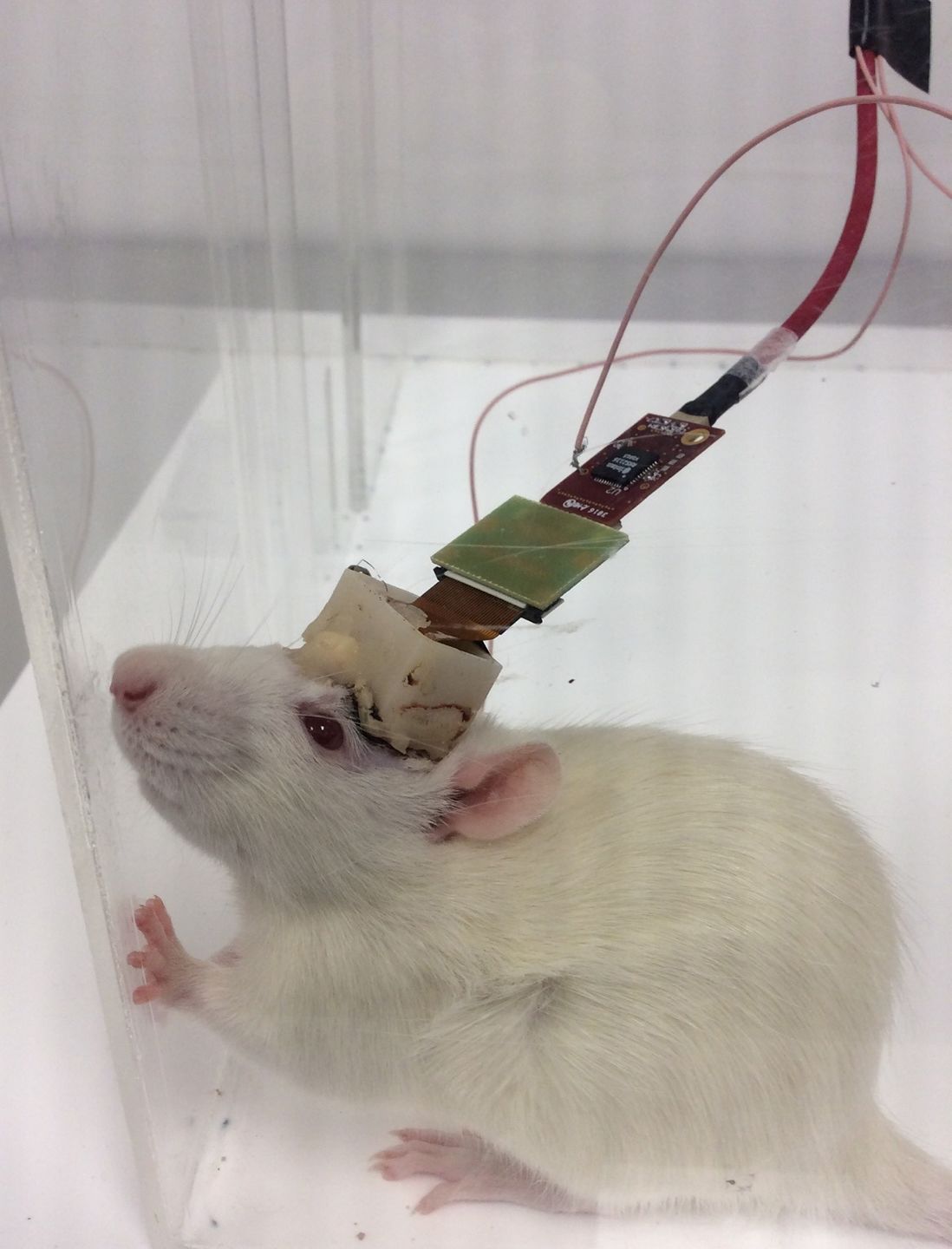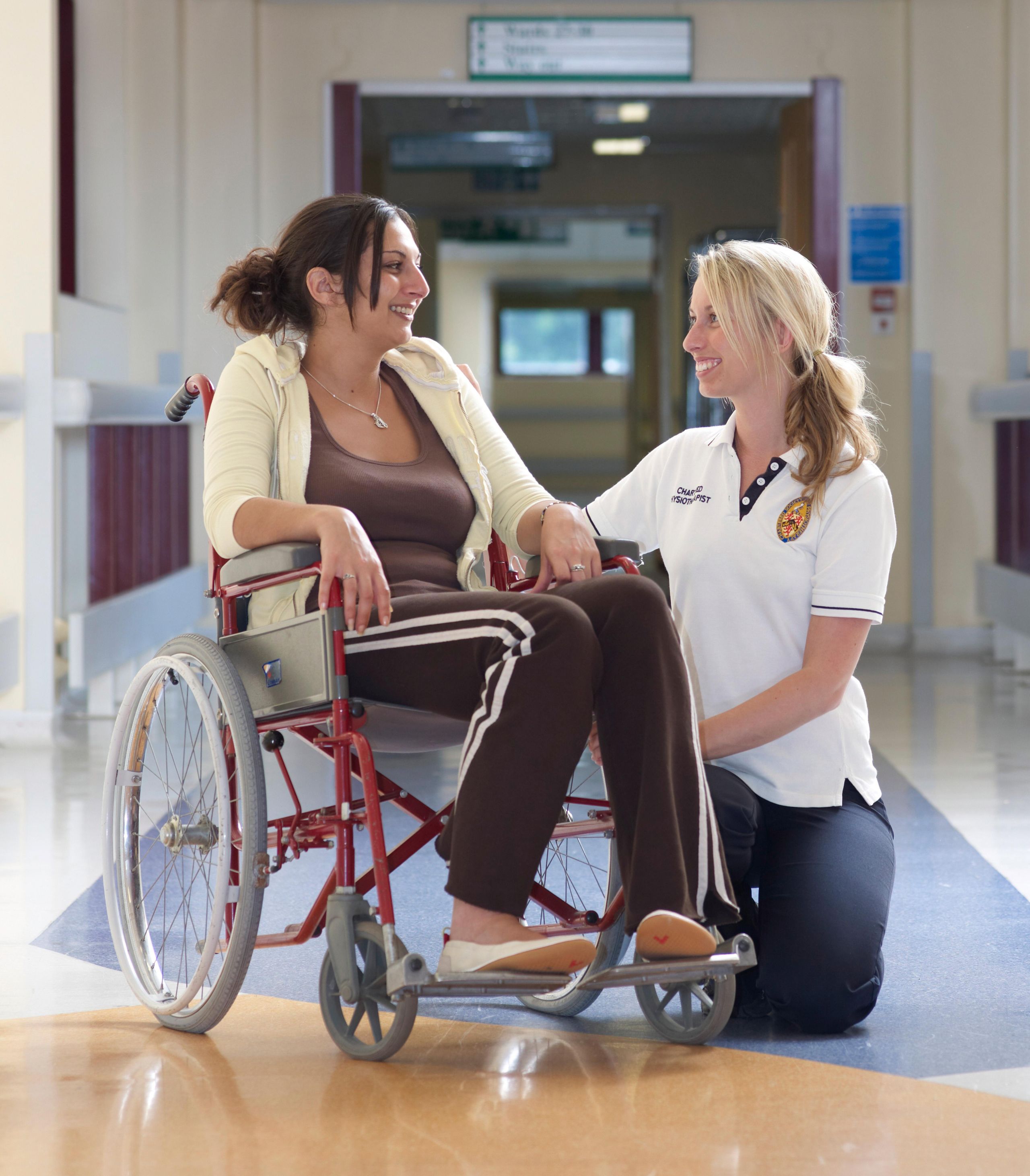Wireless limb control
Researchers in Cambridge’s Bioelectronics Lab
are developing implantable devices to bypass nerve damage
and restore movement to paralysed limbs.

When you want to raise your hand, your brain sends an electrical signal down your spinal cord and into the nerve that feeds the shoulder muscle. This triggers a wave of electricity to spread across the muscle, causing it to contract and your arm to rise. But when this nerve is seriously damaged it can no longer transmit the message – and control of the arm is lost.
“Nerves are the ‘wires’ that carry information to and from our brain, giving us the ability to move muscles on command and receive sensory information about our environment,” says Professor George Malliaras, Prince Philip Professor of Technology at the Bioelectronics Lab in Cambridge’s Department of Engineering.
“Damage to nerves can occur in many ways, through disease or injury, and it can result in permanent paralysis and numbness that can severely impact quality of life. According to the Christopher and Dana Reeve Foundation, almost 1 in 50 people in the US live with paralysis. That’s 5,357,970 people with a central nervous system disorder resulting in difficulty or inability to move the upper or lower extremities.”
Physiotherapist with patient in hospital corridor, UK. Adrian Wressell, Heart of England NHS FT. Attribution 4.0 International (CC BY 4.0)
Physiotherapist with patient in hospital corridor, UK. Adrian Wressell, Heart of England NHS FT. Attribution 4.0 International (CC BY 4.0)
Malliaras is applying his expertise in electronics to the biological wiring of the human body - he wants to create implantable devices that interface with the brain and nervous system to bypass damaged nerves. He is currently leading a project - devised by Dr Alejandro Carnicer-Lombarte - aimed at treating people with peripheral nerve injury, typically caused by a physical insult like a car crash or knife wound.
The team is developing two devices, which they call ‘neuro-prosthetics’. One will read electrical patterns from the brain, and another will inject an electrical stimulus into the target muscle group. The two devices will be connected to each other wirelessly, allowing the seamless transfer of information between the two sites and bypassing the damaged nerve entirely.
“In much the same way that wireless headphones have made the old wired headphones redundant, our aim is make muscles wireless by intercepting electrical signals from the brain before they enter the damaged nerve, and sending them directly to the target muscles via radio waves,” says Sam Hilton, a Research Assistant in Malliaras’ team.
The procedure has been tested and refined in computer simulations, and on cells grown in the lab. But before it can be tested in humans there is another important step: testing its safety in living animals.
“Due to the novel nature of the devices, we have a moral and ethical responsibility to ensure the procedure is safe before being used in humans,” says Hilton. “For this, there is no substitute for the highly complex and interconnected systems of the living body – we need to test it in animals.”
“ We have a moral and ethical responsibility to ensure the procedure is safe before being used in humans – we need to test it in animals.”
Testing the device in rats is helping the team to see where improvements need to be made in the design, implantation protocol or the settings of the device. In the final stages of validation they will use a rat model of nerve injury to show that function can be restored to a paralysed limb.
Each device is implanted into the brain of an adult rat, in a quick procedure under general anaesthetic. A 3D-printed head cap attached to the rat’s skull contains electronics that convey information about electrical impulses in the rat’s brain to a computer for analysis. One week after the device is fitted, the rat is fully recovered and data collection can begin.

Rat wearing 3D printed head cap containing electronics.
Rat wearing 3D printed head cap containing electronics.
Once optimised, the team hopes to use the device to recognise the tell-tale brain pattern associated with the rat’s paw-grasping movement, by offering the rat sugar pellets that it has to reach for and recording the corresponding electrical signals. The data will help them develop the device to be able to determine when a rat wants to grasp with its paw, based on its brain activity alone.
The rats’ welfare is paramount throughout this research. The animals are housed in groups of three or four per cage to stimulate their normal social behaviours – this also enables the researchers to spot any anti-social behaviour, a signal of distress.
Once the device has been implanted, the rats are given special nesting material and easy-to-eat food, and heat packs are attached to the cages to aid recovery. They are checked on regularly and pain relief given as required. Any rat showing signs of chronic distress - such as erect hair, hunched posture, anti-social behaviour and weight loss of 15% of pre-treatment body weight - will be humanely killed.
To avoid testing in animals entirely would place untenable risk on the first human recipients of this new device. The team say that reducing the number of animals used is an important goal for any study, but experiments that don’t include enough animals to produce statistically relevant data are a waste of resources. All of their experiments are carefully designed to ensure that just enough animals are used to produce convincing data, without resulting in unnecessary excess.
To avoid testing in animals entirely would place untenable risk on the first human recipients of this new device.
By working out how complex microelectronics can interface with living tissue in a very precise and controlled way, this work has potential to improve or restore movement in patients suffering severe nerve damage - improving their quality of life, and easing the burden on our healthcare services.
Find out more about the Bioelectronics Laboratory
This article was published on 17 May, 2021


